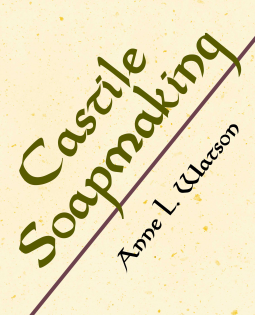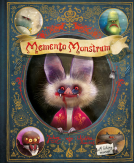
Castile Soapmaking
The Smart and Simple Guide to Making Lovely Castile Soap from Olive Oil Quickly, Safely, and Reliably
by Anne L. Watson
This title was previously available on NetGalley and is now archived.
Send NetGalley books directly to your Kindle or Kindle app
1
To read on a Kindle or Kindle app, please add kindle@netgalley.com as an approved email address to receive files in your Amazon account. Click here for step-by-step instructions.
2
Also find your Kindle email address within your Amazon account, and enter it here.
Pub Date Feb 01 2016 | Archive Date Jun 10 2016
Description
For centuries, the name Castile has been associated with the highest quality in soap. But Castile -- made from olive oil, traditionally in factories -- has proven hard to translate to craft soapmaking. It has earned a reputation as difficult to make, slow to cure, and lacking in rich lather.
Until now.
Anne L. Watson, author of "Smart Soapmaking," continues her soapmaking revolution with the first practical book on making Castile soap bars at home. With the secrets revealed in this advanced guide, you'll be making lovely, quick-curing, lather-rich Castile quickly, safely, and reliably.
/////////////////////////////////////////////////
Anne L. Watson is the author of the wildly popular and widely acclaimed beginners book "Smart Soapmaking" and its companions, "Milk Soapmaking" and "Smart Lotionmaking." She has made soap professionally under the company name Soap Tree, and before her retirement was a historic preservation architecture consultant. Anne's other published books include "Baking with Cookie Molds" and several novels. Anne, her husband, Aaron, and their cat, Skeeter, live in Friday Harbor, Washington.
/////////////////////////////////////////////////
CONTENTS
GETTING STARTED
(Facts and Myths About Castile)
THE KEYS TO CASTILE
(Moving It from Factory to Kitchen)
WHAT DO I PUT INTO IT?
(The Ingredients of Castile)
WHAT DO I USE TO MAKE IT?
(Gathering the Equipment You Need)
Recipe: Anne's Classic Castile
STEP-BY-STEP CASTILE SOAPMAKING
(From Prep to Cleanup and Beyond)
MORE RECIPES!
(Different Castile Soaps You Can Try)
Recipe: Milk Castile
Recipe: Herbal Castile
Recipe: Oatmeal Castile
Recipe: Cleansing Castile
Recipe: Gardener's Lemon Poppy Seed Castile
Recipe: Castor Castile
Recipe: Coconut Castor Castile
Recipe: Tropical Castile
WHY? WHY? WHY?
(Frequently Asked Questions)
WHERE TO FIND MORE
/////////////////////////////////////////////////
SAMPLE
Castile soap is a soap made from olive oil, sometimes with other plant fats mixed in. It takes its name from the Castile region of Spain, where it was made. But similar soap has been linked to other places where olive oil was plentiful, such as Crete, Nablus, Damascus, Aleppo, and Marseille.
There are romantic stories about the soap's origins -- stories involving queens, crusaders, and the Silk Road -- but little or no reliable information. Plant oil soaps, though, were probably developed in the Middle East in medieval times to meet religious objections to the use of animal fats. Castile soap itself is thought to have been inspired by Aleppo soap from Syria, but it omitted that soap's laurel berry oil, which was not easily available in Spain.
Unlike Marseille soap from France, Castile soap has never been legally regulated for content. But it was originally a solid soap made exclusively from olive oil. Hot processing was the only soapmaking method in earlier times -- in fact, soapmakers were called "soap boilers," and their patron saint, St. Florian, was shared with firefighters.
Going by histories and old pictures, soaps like Castile were produced in factories, using unsophisticated equipment and apparently no safety precautions at all. There seems to be no record of Castile soap being made at home. Compared with cottage soap, which was made with reclaimed kitchen grease, Castile was definitely a luxury item.
Castile soap is regarded by many as the pinnacle of the soapmaker's craft. It's also believed to be difficult to make, and especially difficult to make well by a small-scale soapmaker.
It's thought to need lengthy mixing. And to need lengthy aging, with some sources recommending a year or more. And to have poor lather, or even slimy lather.
These are all myths, based on the trouble that craft soapmakers have had in adapting what was originally a factory process. But making quality Castile soap on a small scale is not only possible, it's even not so difficult. It's just different.
So, now, let's explore the differences and see how to make perfect Castile soap -- traditional or with variations -- with little trouble at all.
A Note From the Publisher
Available in paperback and on Kindle.
Available Editions
| EDITION | Paperback |
| ISBN | 9780938497660 |
| PRICE | $0.00 (USD) |
Links
Featured Reviews
 Montzalee W, Reviewer
Montzalee W, Reviewer
Castile Soapmaking byAnne L. Watson is a fantastic book made by a genius of soapmaking! Castile soap is known for being hard to make for crafters, hard to make lather, and hard to cure. Here comes Anne Watson and castile soap to lather, cure, make...well that is not a problem at all! She walks the reader through equipment needed, step by step procedures, tips, recipes, and more. Then, if that isn't enough, she gives us readers castile soap with added ingredients recipes such as oatmeal, lemon poppy, and tropical! Oh yeah!!! How great is that? Love this book, another great book on soapmaking by the master soaper! I received this book for a honest review from NetGalley and it in no way effected my review or rating. Thanks NetGalley!!!
Very informative book. I like that it is very direct and to the point and doesn't pad itself with unnecessary pages of info.
Full review in the link
 janet k, Librarian
janet k, Librarian
Ms. Watson's books are the kind everyone who wishes to make their own soap should use as reference. Castile Soapmaking is book 4in the series and it follows well in technique and experience level. Ms. Watson writes knowledgeably and conversationally. Though the recipes and directions may be basic, they are not condescending or lecture like. I really appreciated that it can be used by novice and experienced soap makers.
*I received my copy through NetGalley.com in exchange for an honest review.
Readers who liked this book also liked:
Jochen Till
Children's Fiction, Comics, Graphic Novels, Manga, Sci Fi & Fantasy







